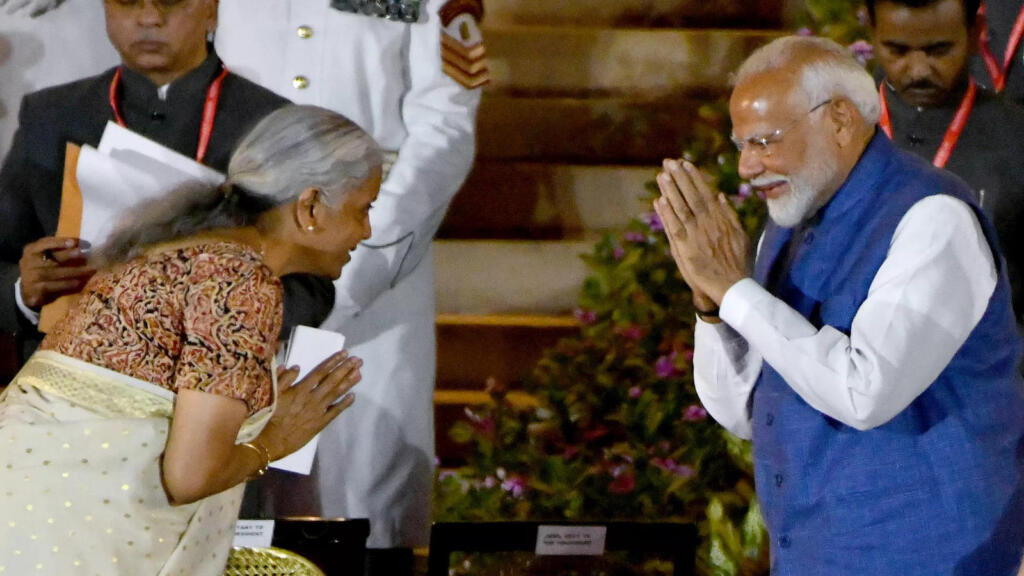The recent Union Budget 2024-25, presented by Finance Minister Nirmala Sitharaman, has sparked intense debate among political leaders and economic experts. Former Union Finance Minister P Chidambaram offered a detailed analysis, highlighting both similarities to Congress proposals and areas of concern. This article examines key aspects of the budget and its potential impact on various sectors, focusing on the government’s approach to crucial economic challenges.
Addressing the Job Crisis
The budget aims to boost job creation, especially for youth entering the workforce. A noteworthy initiative is the government’s plan to provide one month’s salary as a Provident Fund contribution for those starting their first job. This measure is expected to benefit 210 lakh youngsters, according to the Finance Minister.
However, Chidambaram argues that the government’s response to India’s 9.2% unemployment rate is insufficient. He suggests the budget allocation may have limited impact on the grave unemployment situation. Furthermore, he questions the claim that the announced schemes will benefit 290 lakh persons, calling it “highly exaggerated.”
The budget’s focus on employment-linked incentives and apprenticeship schemes with allowances shows some alignment with opposition proposals. However, critics argue that more comprehensive measures are needed to address the scale of India’s unemployment challenge.
Addressing Budget Concerns for Workers
Chidambaram points out stagnant wages over the past six years when adjusted for inflation. He provides data showing average monthly earnings from 2017-18 to 2022-23 were ₹12,800 for self-employed individuals, ₹7,400 for casual laborers, and ₹19,750 for regular wage laborers. To tackle income disparities effectively, he proposes establishing a uniform minimum wage of ₹400 per day across all employment types.
The budget, while offering some relief to tax-paying citizens in the 0-20% bracket, reportedly neglects poorer sections, especially non-tax-paying wage laborers and casual workers. This has raised concerns about the budget’s ability to address income inequality and improve living standards for the most vulnerable segments of society.
Inflation and Economic Growth
The budget presentation claims that India’s inflation remains low and stable, moving towards the 4% target. Finance Minister Sitharaman stated that core inflation (non-food, non-fuel) currently stands at 3.1% and assured that steps are being taken to ensure adequate supply of perishable goods to the market.
However, Chidambaram highlights current economic challenges, citing WPI inflation at 3.4%, CPI inflation at 5.1%, and food inflation at 9.4%. He criticizes the government’s approach to inflation as “casual” and expresses doubt over its commitment to addressing the issue effectively.
Furthermore, Chidambaram questions the GDP growth projection of 8.2% for 2023-24, citing concerns over the deflator used in calculations. He emphasizes that addressing inflation remains a critical priority despite reported economic growth rates. This discrepancy between government projections and opposition critiques highlights the need for transparent and rigorous economic analysis in budget planning.
Education and Healthcare in the Budget
Chidambaram criticizes the budget for neglecting education, pointing out reduced spending compared to estimates. He flags issues with the National Eligibility cum Entrance Test (NEET) and the “scandal-ridden National Testing Agency.” The former Finance Minister notes that against a budget estimate of ₹1,16,417 crore for education, the government spent only ₹1,08,878 crore, indicating a significant shortfall in educational funding.
In healthcare, he highlights high out-of-pocket expenditure, which remains at 47% of total health spending. Chidambaram emphasizes shortages in medical staff and equipment, criticizing the government’s reduced healthcare expenditure—0.28% of GDP and 1.9% of total spending. He also points out that against a budget estimate of ₹88,956 crore, only ₹79,221 crore was spent, underscoring significant concerns in public healthcare funding.
These funding shortfalls in critical sectors like education and healthcare raise questions about the budget’s priorities and its ability to address fundamental development challenges.
Farmer Protests and Student Loans
The budget reportedly fails to address ongoing farmer protests demanding legal guarantees for Minimum Support Prices (MSP). This omission is particularly noteworthy given that providing a legal guarantee for MSP was a promise made by the opposition in their manifesto. Chidambaram urges for farmer feedback on this critical issue, highlighting the need for inclusive policy-making.
Additionally, Chidambaram notes the lack of relief measures for students struggling with education loan repayments due to high unemployment rates. He expresses disappointment over the government’s focus on new education loans without addressing existing borrowers’ challenges. The former Finance Minister suggests considering a one-time write-off of unpaid educational loan balances to alleviate the burden on unemployed graduates.
Conclusion
While the Union Budget 2024-25 introduces some new initiatives, critics argue it falls short in addressing key economic and social challenges. The budget’s effectiveness in tackling unemployment, inflation, and sector-specific issues remains to be seen. As debates continue, stakeholders across various sectors will closely monitor the implementation and impact of the proposed measures.
Moving forward, a more inclusive and comprehensive approach to budget-making may be necessary to address the diverse needs of India’s population and economy. Balancing fiscal responsibility with social welfare and economic growth remains a critical challenge for policymakers in the coming years.
ALSO READ: India’s Economic Roadmap: Key Insights from the 2023-24 Economic Survey
